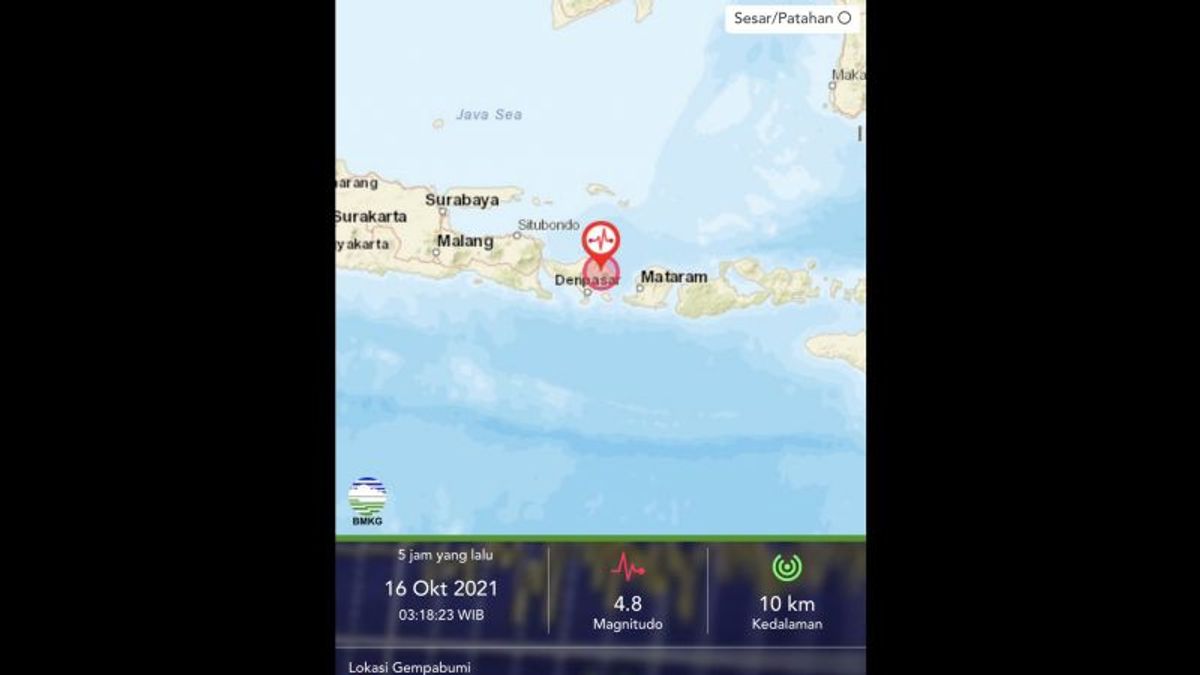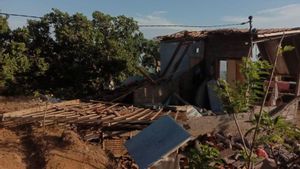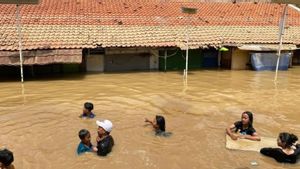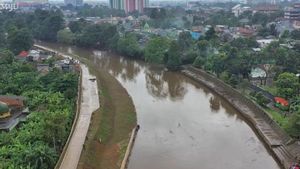BALI - An earthquake with a magnitude (M) of 4.8 that occurred in Karangasem Regency, Bali, at 03.18 western Indonesia time was caused by fault activity or local active faults.
Head of Earthquake Mitigation Division of the Meteorology, Climatology and Geophysics Agency (BMKG) Daryono said the epicenter of the earthquake was located at coordinates 8.32 South Latitude, 115.45 East Longitude, 8 kilometers (km) northwest of Karangasem with a depth of 10 km.
This earthquake caused a number of damage to buildings in Rendang District, Karangasem, Bali.
"Paying attention to the mechanism of the source of the Bali M 4.8 earthquake which was destructive this morning, it appears that the earthquake that occurred was caused by fault activity or local active faults, not due to the Flores Back Aec Thrusting fault," said Daryono as quoted from his official Twitter account @DaryonoBMKG, Antara, Saturday, October 16.
He said, although there is a suspicion because of the location of the epicenter in the Agung-Batur Volcano complex, there could be a connection with magma migration that triggered local fault activity.
"The epicenter of the Karangasem earthquake this morning was located in the swarm earthquake zone of the Mount Agung and Mount Batur Complex in 2017," he said in a written statement.
SEE ALSO:
He explained that the swarm earthquake that occurred in September-October 2017 had the largest magnitude of 4.2. Furthermore, on November 8, 2017, the strongest earthquake occurred with M4.9 which also caused minor damage.
The results of BMKG monitoring until 05.30 western Indonesia time recorded three aftershocks after the destructive M 4.8 earthquake in Rendang, Karangasem, Bali. The earthquake was felt with a magnitude of M 3.8 (felt in Karangasem III MMI), M 2.7, and M1.7 which occurred at 03.52 western Indonesia time.
Daryono said the M4.8 earthquake in Rendang Karangasem Bali that occurred this morning not only caused damage to houses, but it also triggered collateral hazards such as landslides and rock collapse in several places, he said.
"In mountainous areas with steep hills, the after-effects of strong earthquakes in the form of landslides and new debris are common, so topographic effects of this kind should be watched out for during and after the earthquake," he said.
The English, Chinese, Japanese, Arabic, and French versions are automatically generated by the AI. So there may still be inaccuracies in translating, please always see Indonesian as our main language. (system supported by DigitalSiber.id)


















